Pattern recognition with MRPOD¶
Note
Please refer to the previous tutorial
Pattern recognition with POD for more details regarding the
synthesized datasets and the performances of POD in pattern recognition.
Instead of pod_modes, the function mrpod_detail_bundle will be used
to carry out the task.
We will pick up right where we left in the previous tutorial and use the same examples to demonstrate the advantages of MRPOD over POD for pattern recognition in the flow field.
Sub-noise-level dynamics¶
For the very noisy dataset created to challenge POD:
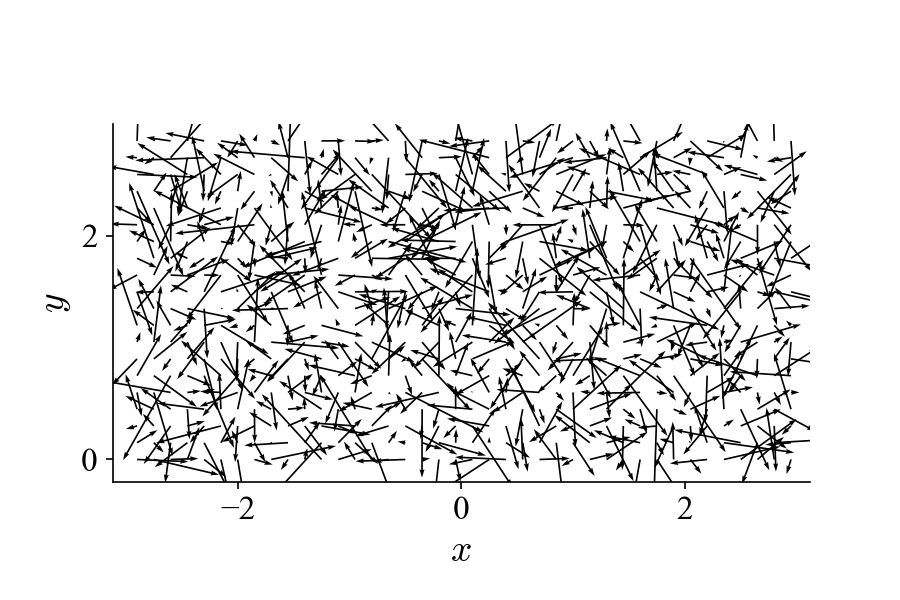
By performing MRPOD within a shortpass imposed by the composite wavelet filter,
from mrpod import mrpod_detail_bundle
# pre-generated filterbank with symlet of the length 24
dir_filterbank = "filters_sym12_j=8.pkl"
# set decomposition level j and scale n
j_level = 3
n_scale = 0
# v_array is the pre-generated dataset
pod_results = mrpod_detail_bundle(v_array, js=[j_level], scales=[n_scale],
seg=1, num_of_modes=10,
full_path_filterbank=dir_filterbank)
# get the modes and projection coefficients
proj_coeffs = pod_results['proj_coeffs']
modes = pod_results['modes']
eigvals = pod_results['eigvals']
# normalize eigenvalues
eigvals = eigvals/eigvals.sum()*100
we can obtain the following two modes (mode 1 and 2):
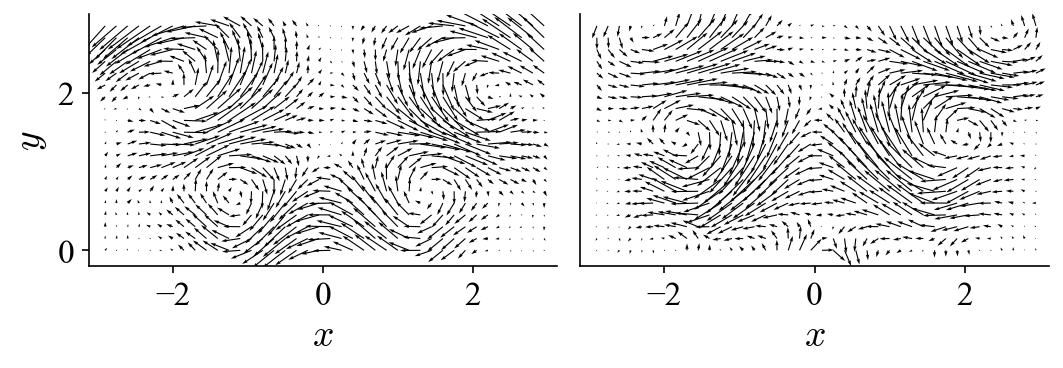
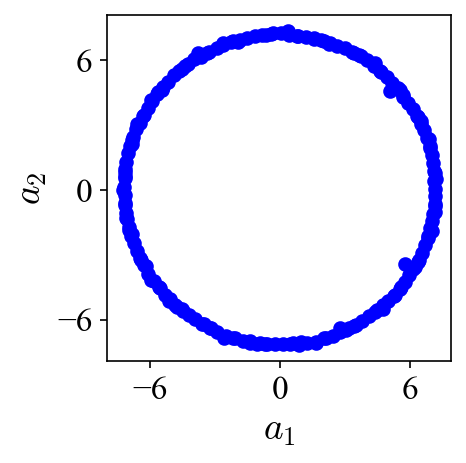
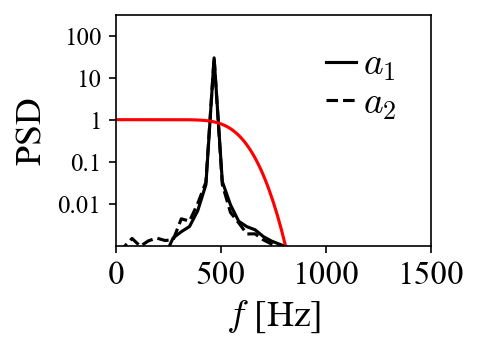
Comparing to the results achieved with POD in the previous tutorial, the superior performance of MRPOD on this problem is quite striking. The bandpass (shown as the red line in the phase portrait) can be narrowed to further improve the denoising capability.
Coexistence of multiple dynamics¶
For the dataset with two superpositioned dynamics:
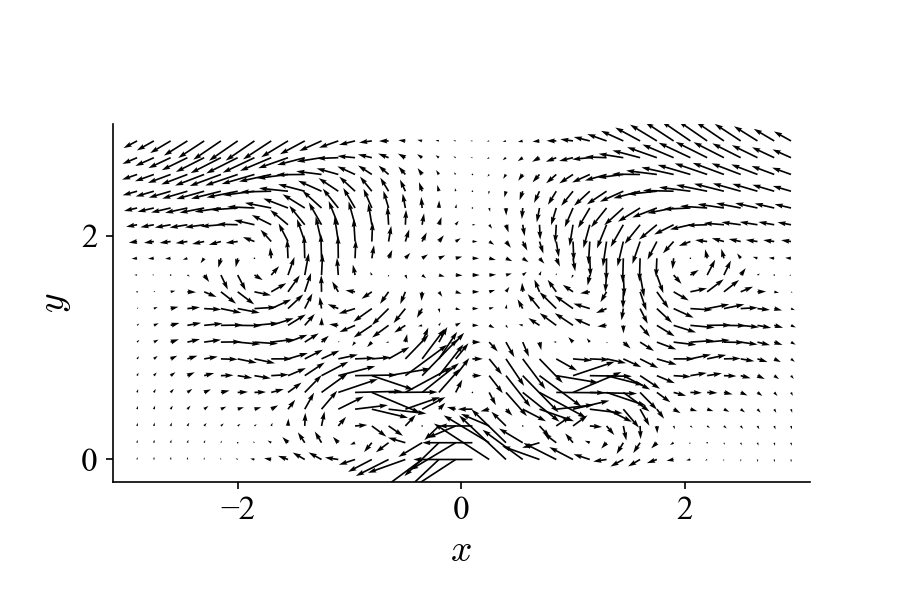
We can design two bandpasses to isolate the two distinct dynamics in the spectral domain and carry out MRPOD accordingly. For the first (original) dynamic we can impose a lowpass filter and get:
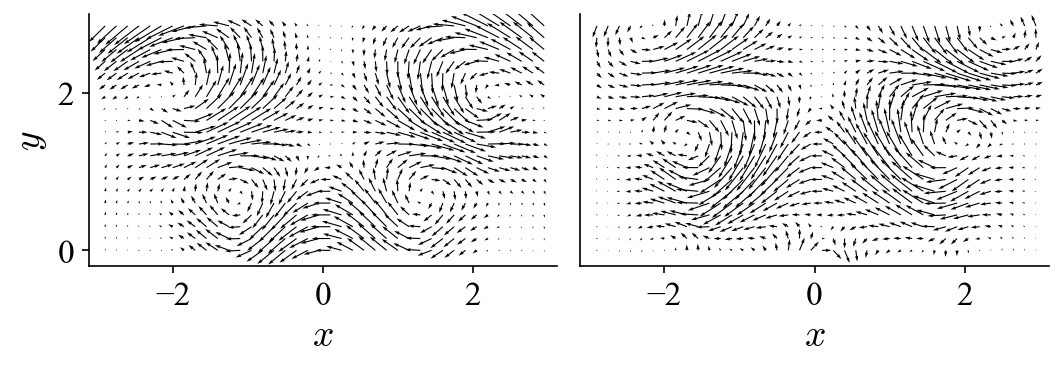
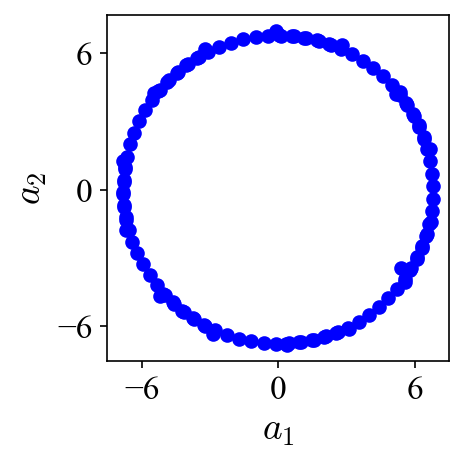
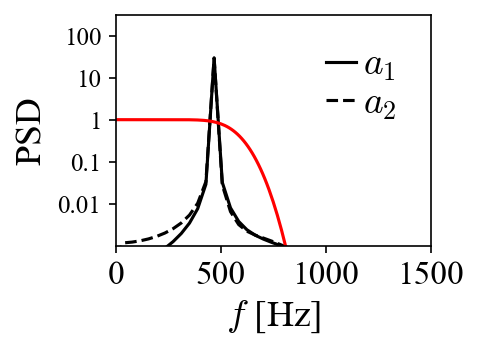
Analogously we can impose another bandpass filter to extract the added dynamic ( by setting n_scale=1 in the Python script above):
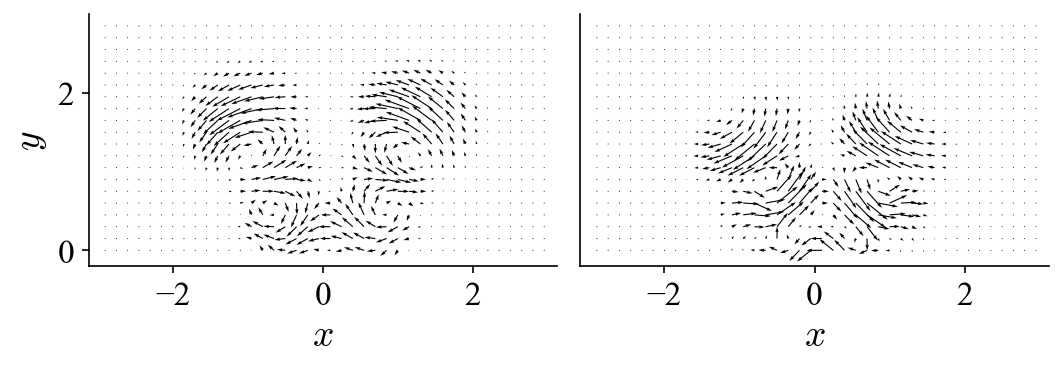
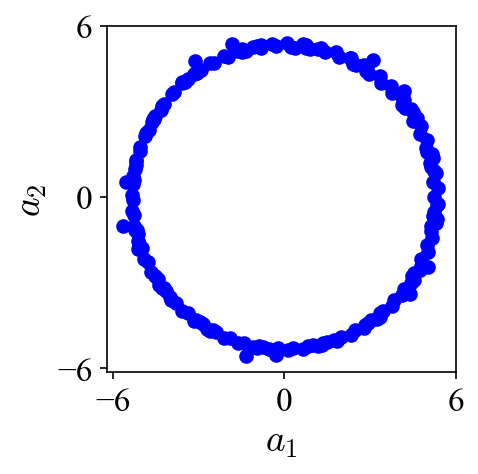
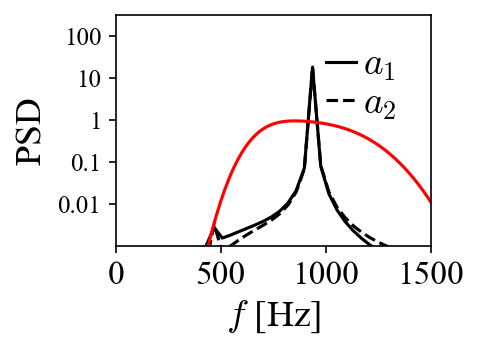
Now we have separated these two dynamics and we can inspect them without the spectral cross-talk that we saw in the previous tutorial with POD. Using the reduced-order reconstruction introduced in the previous section, we can visualize these two dynamics separately as:
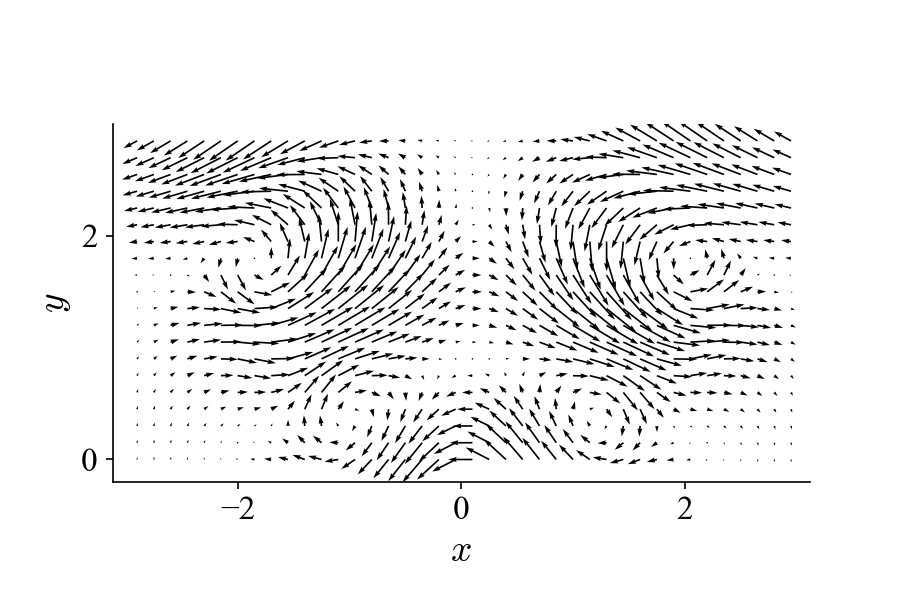
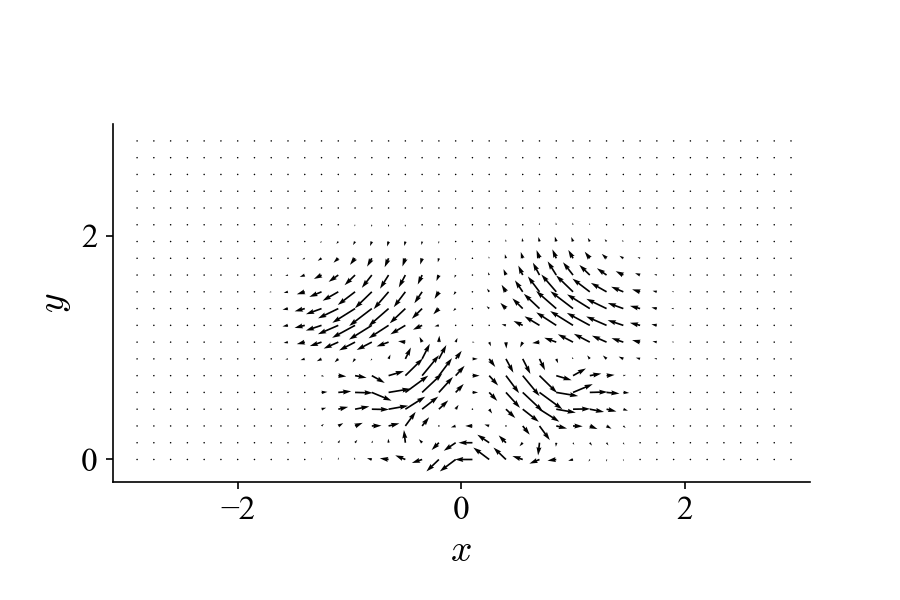
Warning
The composite wavelet filters must be tailored to the specific problem at hand by considering the necessary spectral isolations, the length of the dataset and the desired outcome. MRPOD is not a one-size-fits-all technique.